VENUES, SPACES AND CRITICAL FRAMEWORKS
RESEARCH TASK: Where art is made and displayed
I like the quote by B. O’Doherty in the study notes (p2/13): ” Every studio has to have some traffic with the outside.” From this, I take that space obtains meaning from social agreements or usage, which can change. (p 7)The studio is not an innocent space of creation. Mine is a ‘nest’ of chaos, not an empty retreat like Piet Mondrian’s. I have read and worked in my studio around the work I created, and in many ways, it was a ‘womb’ for my creations (page 21). Still, I ventured outside, visited sites where the nests were found and contacted specialists for more information and site-specific knowledge I needed. I made sound and video recordings of these sites. I heard in a video chat with Gilda Williams on “How to write about Contemporary Art (https://www.youtube.com/watch?v=Oqi_k1RQsnQ&app=desktop) how she saw writing about your work as an artist is an important skill. I took away the opportunity to develop my idea through language to ensure I knew how to write about my work and use language to accompany it.
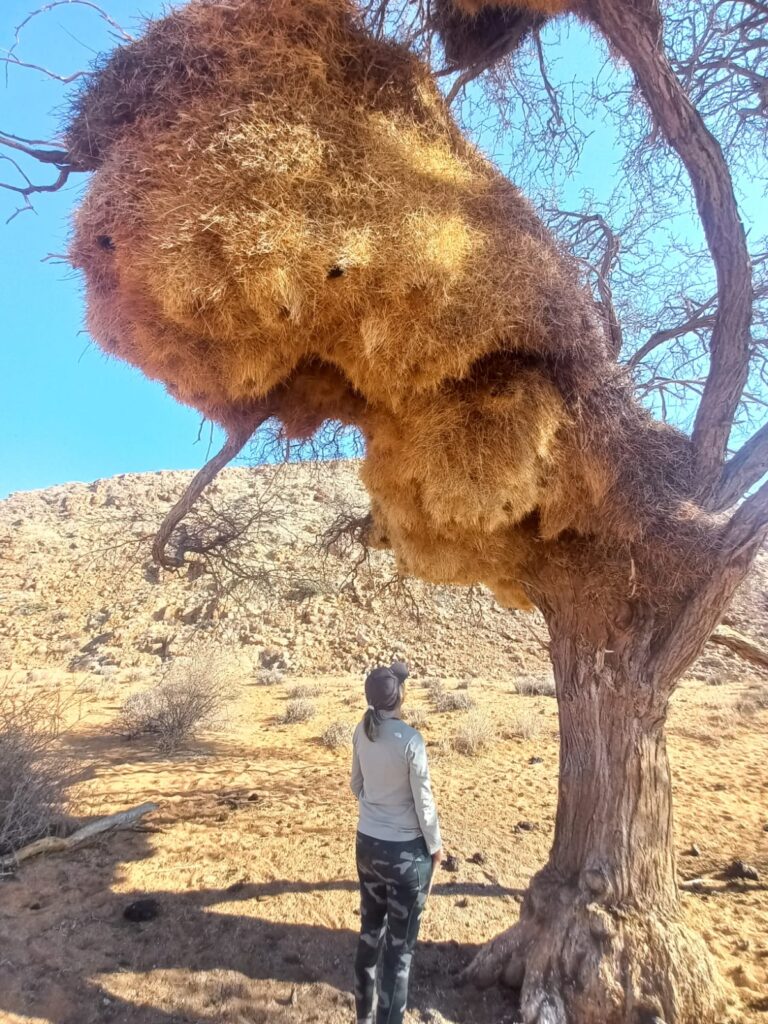
The question is, how can I take this literal step?
I live on a farm and want to share my work here – the farmyard around our house and a barn. From a budget perspective, I can manage to keep costs low. Our town is small, and I considered using the church hall or the tiny library. Still, I think the interaction with viewers will be much more effective using ‘own space’ and not having concerns about additional things I had to take along to celebrate this occasion.
Using this unconventional space I discuss below, I hope to dissolve the boundary between the formal and informal, the inside and the outside, much like how the wire nests blur the line between protection and confinement. As sociable weaver nests are used communally by multiple species, the shed can become a shared, dynamic space that fosters engagement. It becomes a place where the barriers between human-made and natural, interior and exterior, are questioned.
I see the link between the contextual side of this work as my artistic journey centres around exploring heterotopias, a concept introduced by Michel Foucault to describe spaces of otherness that are neither here nor there, simultaneously physical and mental. This theoretical framework is crucial to understanding my wire sculptures, mainly the intricate nests I create. These nests embody home, safety, and confinement themes. They are a physical manifestation of spaces that foster reflection, reconsideration, and reconstruction of these ideas. In my research, I also learned that a wide range of animals use sociable weaver nests, which supports the notion that, by constructing these large nests, sociable weavers are ecological engineers in this ecosystem.
Inspired by the nests of Sociable Weavers, Hotel Kalahari 2024 reimagines these intricate structures using wire, creating a unique ‘Other Space.’ Drawing on Foucault’s concept of heterotopias, these wire nests invite you to reflect on the ideas of home, safety, and confinement. Just as Foucault described heterotopias as spaces that juxtapose different meanings, these nests juxtapose natural forms with human-made materials, challenging traditional notions and encouraging new interpretations. The shed’s ruggedness, connected to the outdoors, can be a metaphor for the natural world encroaching upon human structures. As I explore themes of disconnection from nature, the shed becomes part of the narrative, bridging the gap between my art and the environment.
Bibliography
O’Doherty, Brian (2007) Studio and Cube, read on https://monoskop.org (page 1-80)
Exercise 1: Beginning
I want to present my work and celebrate my efforts in this course. I look forward to interacting with the public.
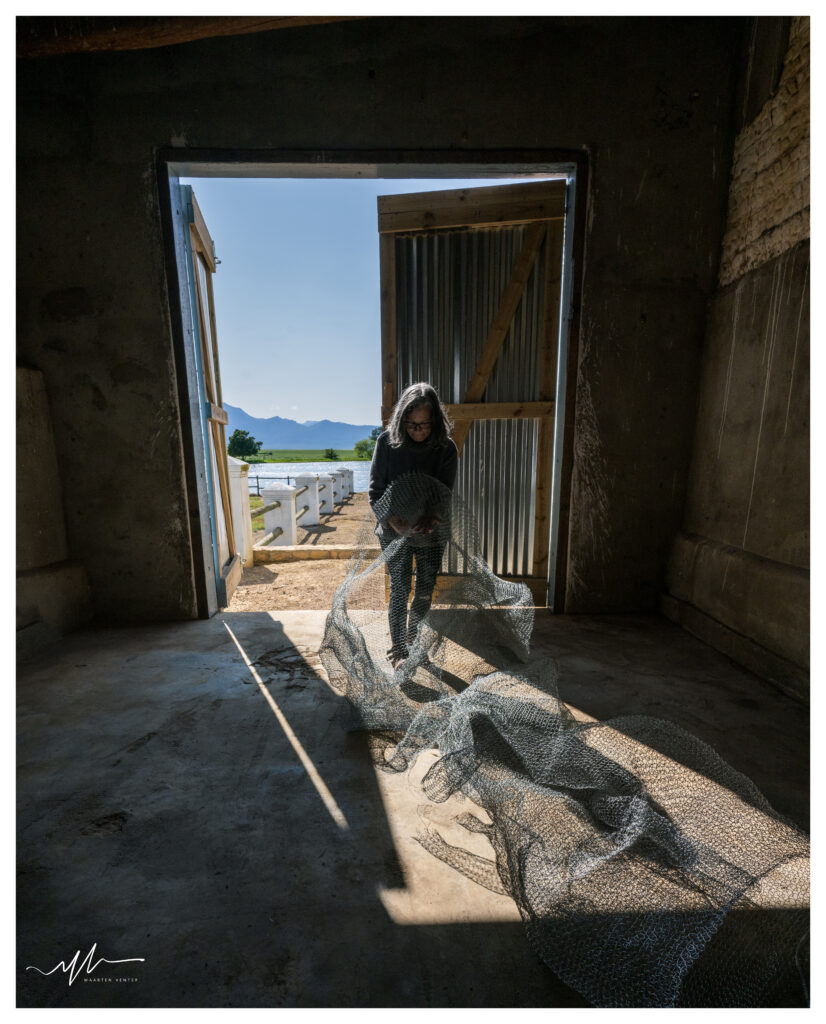
Practical concerns
I have asked the support of friends who are professional photographers to assist. My two sons will videotape the event, and we will use some drone footage. The anticipated cost is minimal as they already have the equipment to share.
All three of my daughters-in-law will assist, two for catering/reception and the other as a graphic designer. I have asked them to assist with planning the event and the marketing materials, such as the invitation for the Vernisage, a “save the date” and an official invitation, as well as a reminder/follow-up. I started a working document on an Excel spreadsheet where I keep track of actions. We will use social media posts over the last five weeks before the event to share information and images. Four weeks before the event, we will send an invitation to key figures and close contacts for the Vernisage. The ‘save the date’ notice is planned to be sent on Friday, 13 September 2024. These invitations will be done digitally. I will share the exhibition dates/invite information on my IG and Facebook accounts and with the OCA EU student group.
Exercise 2: 3d Plans
My work is an installation, and how I place it in this environment will impact how it is perceived/interpreted. I think I have time on my side and access to the space. My main concerns at this stage are electricity and hanging the work. Below is an image of me still working on the nest, but inside the ‘gallery’ space
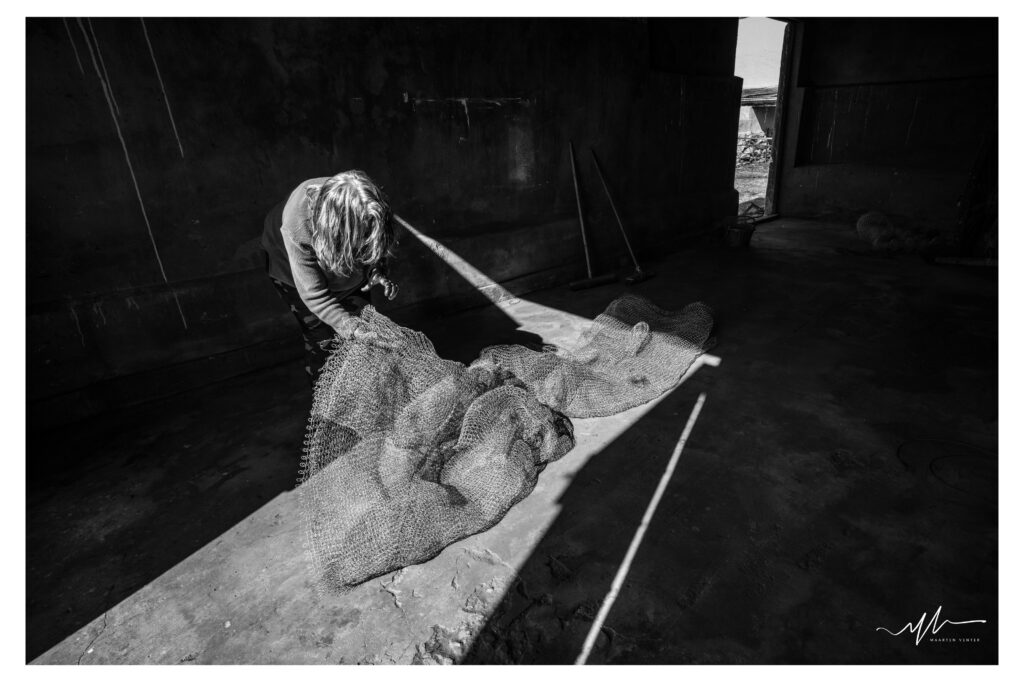
Exercises 3 and 4 Scoping Venues and Space Testing – the indented space
I had to arrange with farm management to use a barn and the guest cottage on the farm. I plan to use the barn for at least a week after the opening and will start installing it at least a week before the exhibition. The cost is minimal – I need labour as implements, etc, have to be removed from the barn, clean it up and consider adding lighting. Insurance is covered, and I will check for public liability and other security measures. We have a security firm for any related issues.
The space reinforces the connection between the artwork and its environment. It allows visitors to experience the work in the context of its origin, deepening their understanding of my creative process and the themes I explore. This area is close to our home and part of the extensive farmstead where all the wheat and sheep farming activities happen. Some of the buildings have a view of the dam, where bird life is prolific. The space shared on the three images below will be used for a talk around the work before the guests will be invited to view the work.
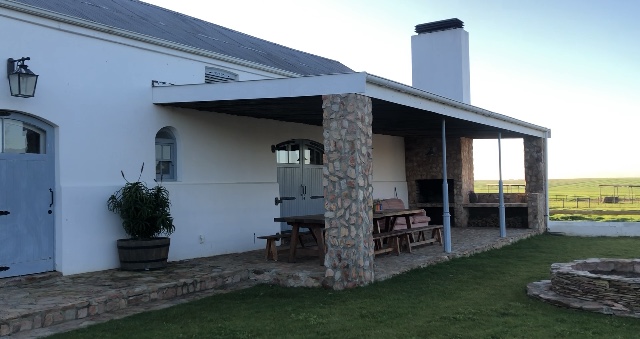
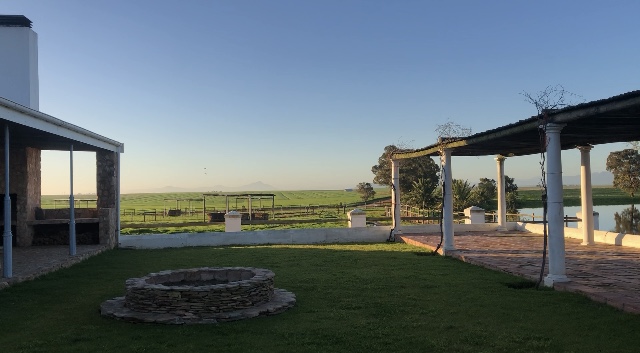
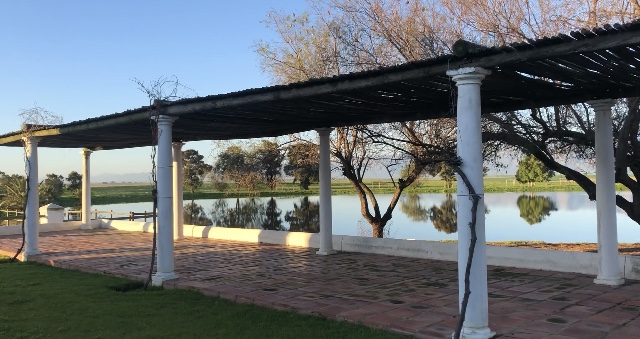
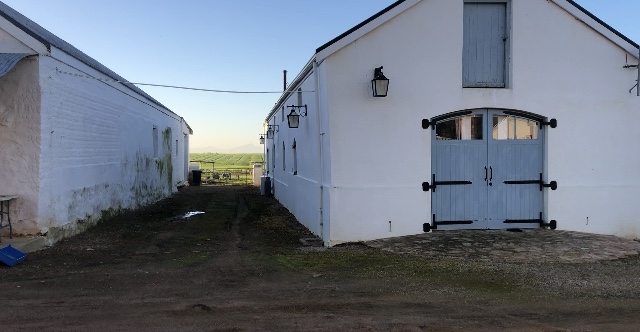
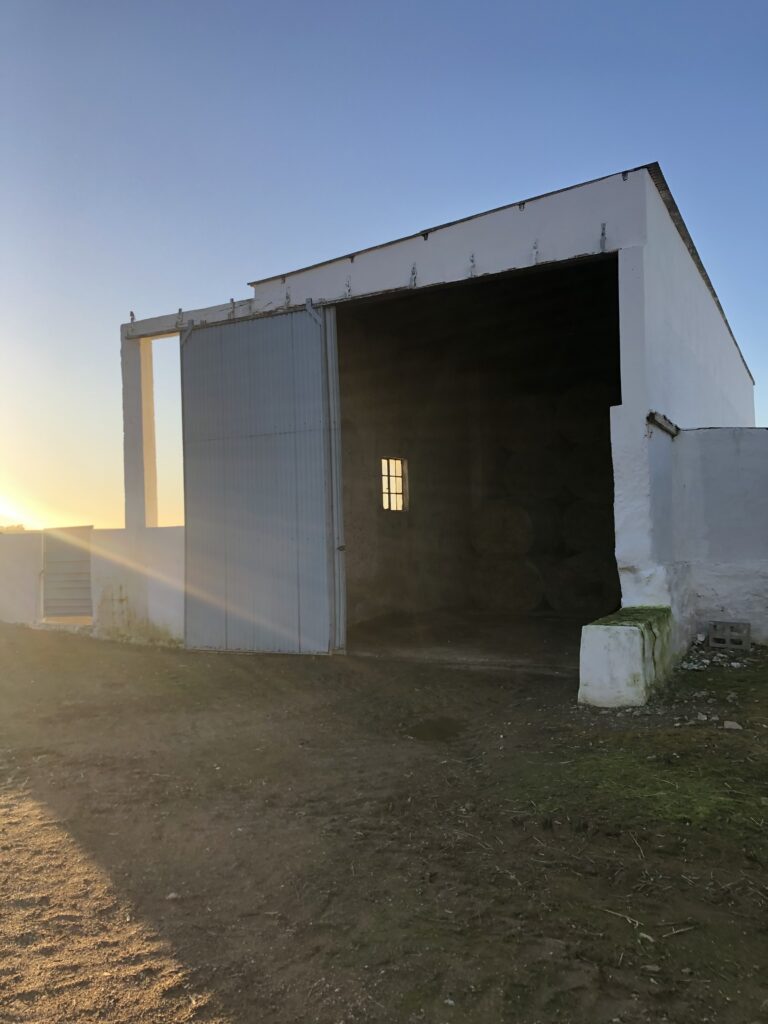
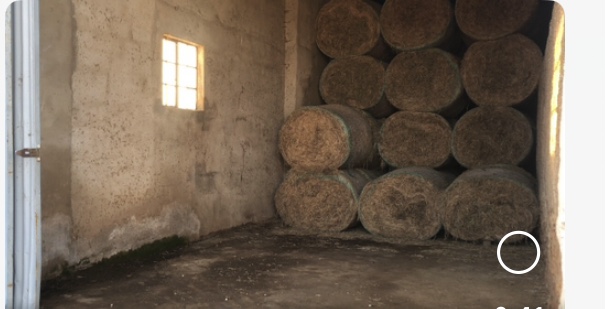
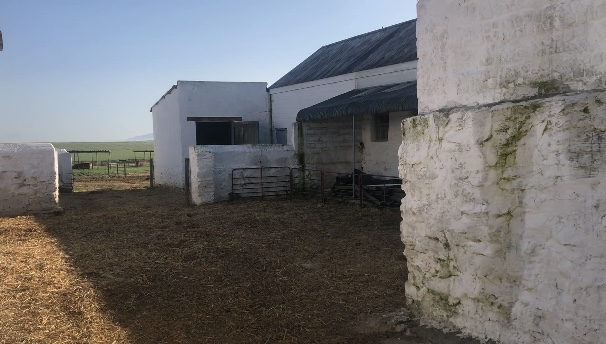
The barn becomes an extension of my studio in the weeks before the exhibition. I seek a space where the boundary between creation and exhibition should be fluid. The space feels comfortable, and I start working there during the day. I can present my work where I live and create. The natural surroundings, the light, the air, and the bird sounds —all become part of the exhibition, influencing how the work is seen and felt. I have placed the works on the floor and hung some on the walls to explore ideas for using the space and how light will be used. Revisiting the area over a few days and getting second opinions was a good learning experience.
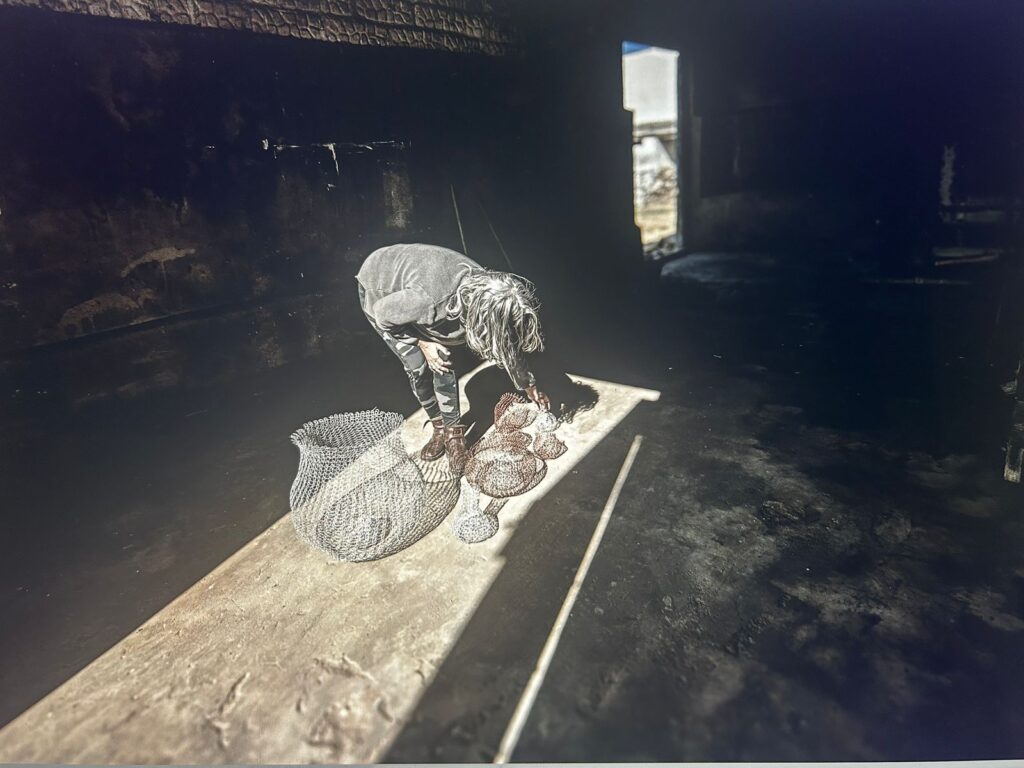
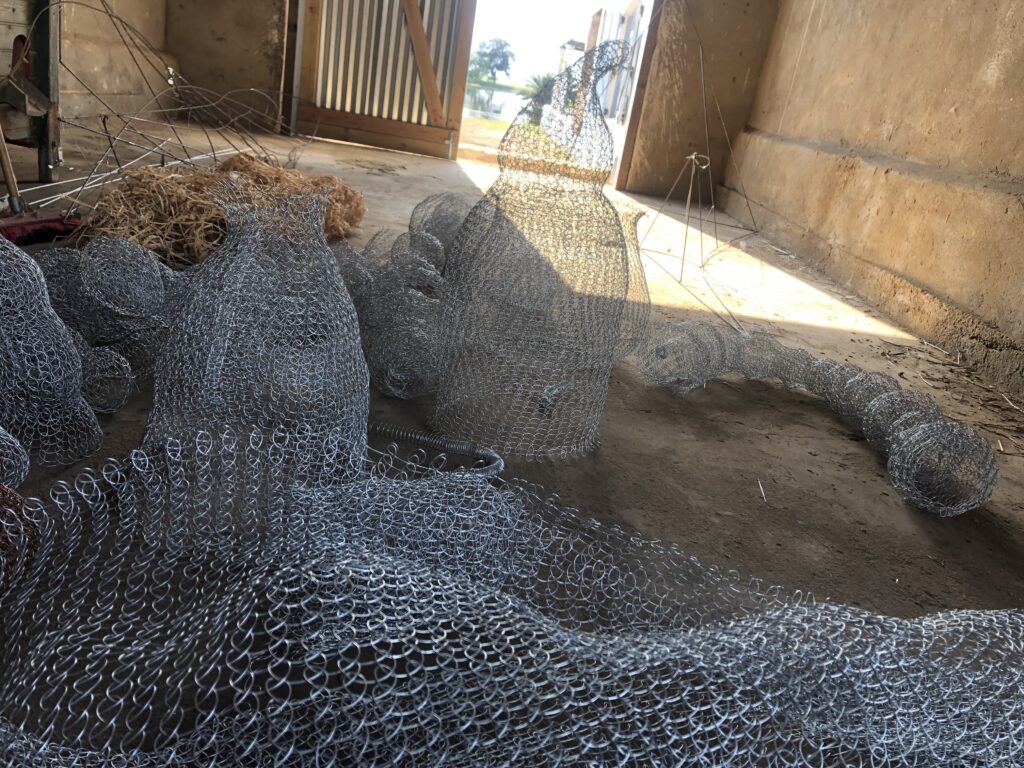
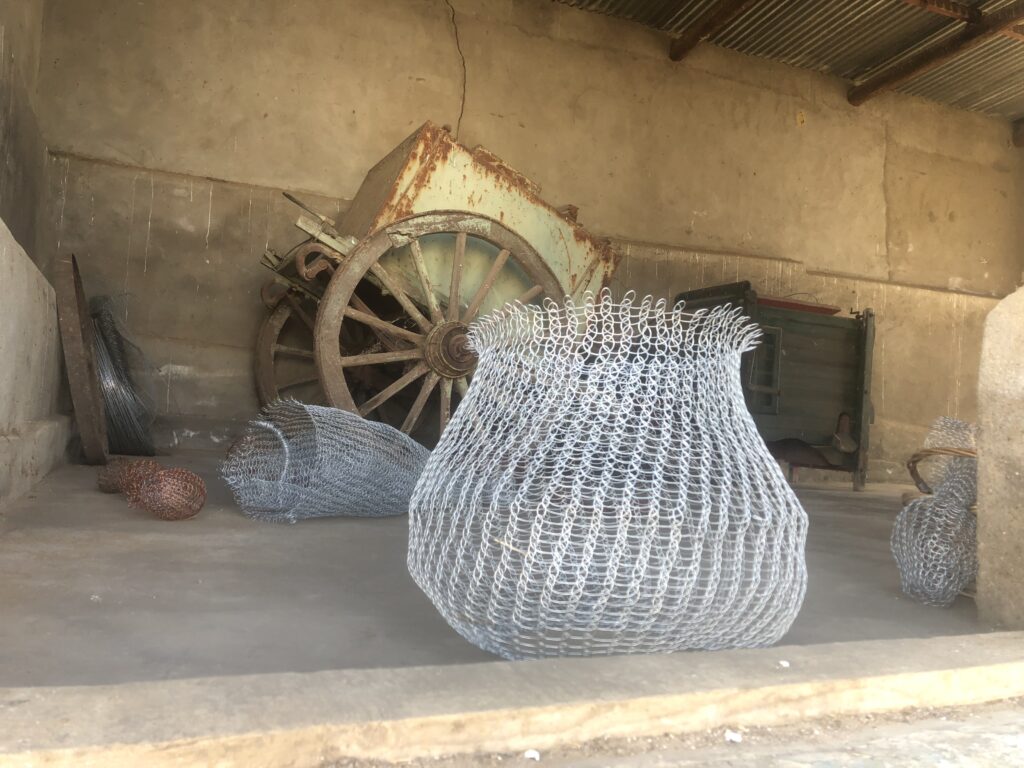
I became aware of being sensitive to place. It asked me if my artwork could speak in such a space. I must become sensitive to the dialogue between my work and the surroundings. I am focused on light; this is a very neutral space.
- I must understand how viewers will engage with the space and the work.
- I must consider how I can create a space to help the viewer explore and understand the work in an already interactive environment.
- I want the viewers to connect with the work, which has many layers.
- This made me aware that viewers can also connect (or be distracted?) by the outside view – the dam, the view onto the kraals and wheatfields.
How does this feed into my art?
It reminds me of the two nests hanging on our verandah, which I placed there after I made them. I continued to take regular photos of the nests and the view, as this is the view from my bed (bedroom). Some days, it sways in the wind or just softly dangles—sometimes, a bird passes by, but mostly, it is there for me to enjoy this process of work interacting with its ‘space’. I now need to draw on this learning.
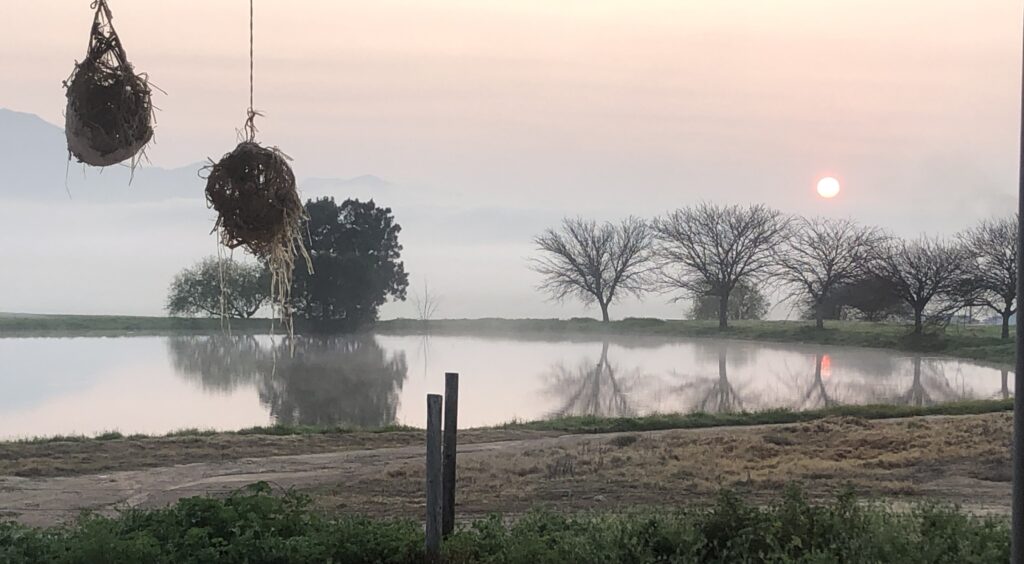
I looked at how other artists use space and the spatial experience for viewers.
Below is a work by the Ghanaian artist El Anatsui titled “Womb of Time.“ It is made with aluminium from flattened bottle caps and copper wire. I looked at this when I considered space and volume. This work seems to absorb the whole room with its presence.
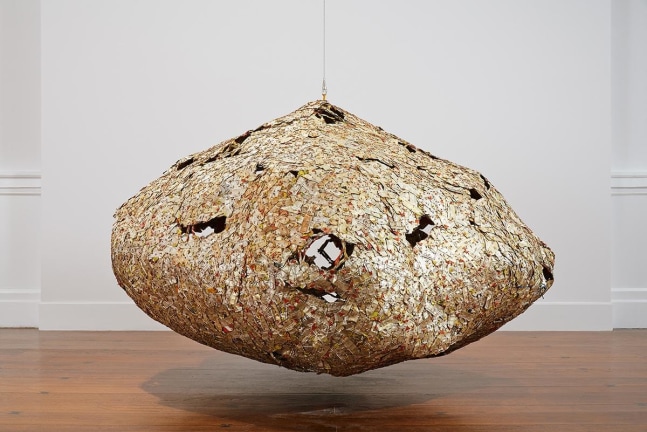
My Belgian friend, Gerd suggested I look at the work/gallery/curation of work by Axel Vervoordt. Below is a very recent exhibition which caught my eye.
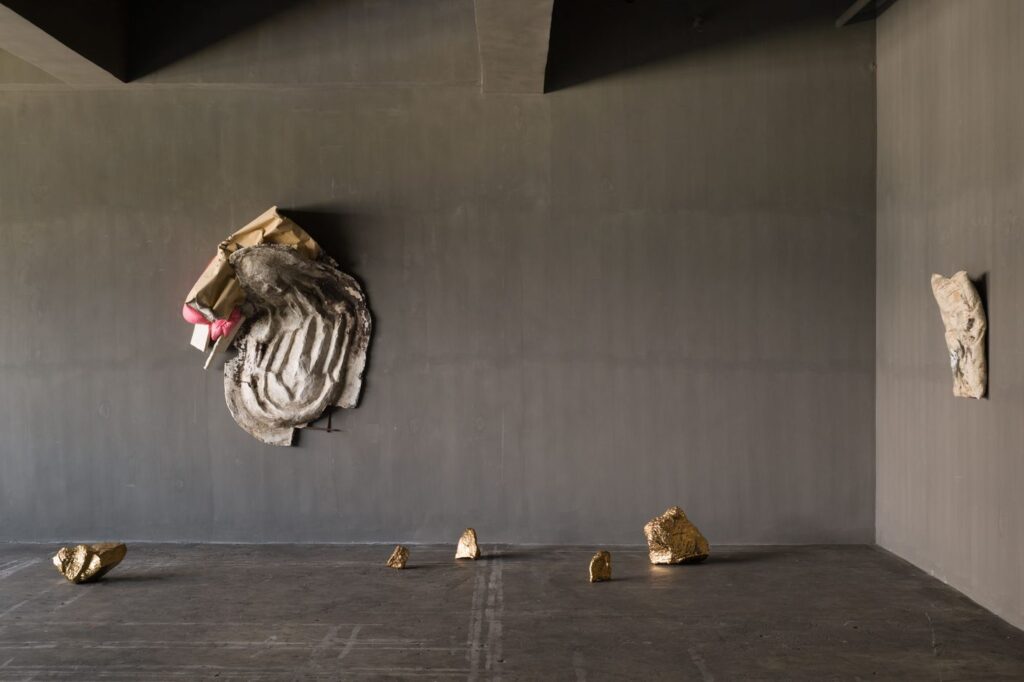
This image comes from a group showcase,Visions of Continuity. On the website I read: “The artists offer a diverse range of narratives that delve into the interconnectedness of society, nature, and community. Each artist’s blend of individual and collective expression evokes memory, history, space, and spirituality, offering a fresh and intriguing take on the world around us.” I researched the ideas behind this curator, and I like the idea of being sensitive to space….even silence. As a busy human being, I think I can also bring this to my viewers during the exhibition. I think about my making – from where does it come? How does it start? There is a void before we engage in making, and that for me is also a space of silence. It is that place before we think, speak, make.
Recently, valuable time was spent in these ‘possible spaces ‘with a Belgian friend who has extensive curating experience and strong expertise in engaging with the work one exhibits. The importance of this visit to the ‘intended space’ was that I looked afresh but also tried to listen to her experience of the space. We considered the element of the nest and its relationship to the space and surroundings. If I could use volume and hight for the big nest. We looked at natural light in the barns and the volume of the ceilings to install the work. She guided me to be sensitive and use what I have – she feels less is more. We looked at the ladders; some equipment could be used as props. A box-type implement could be used as a space to screen a video with a beamer.
We also considered focusing on the interplay between the barn’s physical space and the nest’s conceptual space, highlighting the tension between silence, interaction, and contemplation.
There was a lovely discussion, followed by her mentioning the ‘inner space’ as part of the work. I want to make it a (bigger) nest where viewers can sit and interact with each other—how to use this as a conversation area with the viewers. Until then, I had an idea to make an open nest with hay—people can sit on haybales placed inside it. By doing this, I add an extra layer of viewer experience. Philosophical questions could be shared ‘inside’ this nest.
This approach resonates with my theoretical research into linking this space with a heterotopia. The exhibition mirrors the cultural context and history of the building as part of farming, but the nests bring in nature and a place for contemplation, and the space is then experienced differently. As a heterotopia It becomes a place where different realities coexist, inviting viewers to experience the barn fresh, reflective, and layered with history and nature.
Ideas about the space in terms of contrasts and transitions are contemplated, and I thought I could start by using the barn’s physical characteristics—its height, light, and rustic materials—to draw attention to the silence of the space. The hanging nest could become an anchor in this silence, representing a pause for reflection. By suspending the nest in the air, I might emphasise the idea of weightlessness, inviting viewers to slow down and contemplate its presence. I remember listening to a video conversation between the Spanish artist, Jaume Pensa and Joseph Becherer where Pensa talked about how we are always looking down, and the need to look up. His work, which he referred to, is on a very different scale, but the idea of directing the viewer’s view is important in this situation.
It reminds me of the opportunity to take my viewers on a journey – using my narrative.
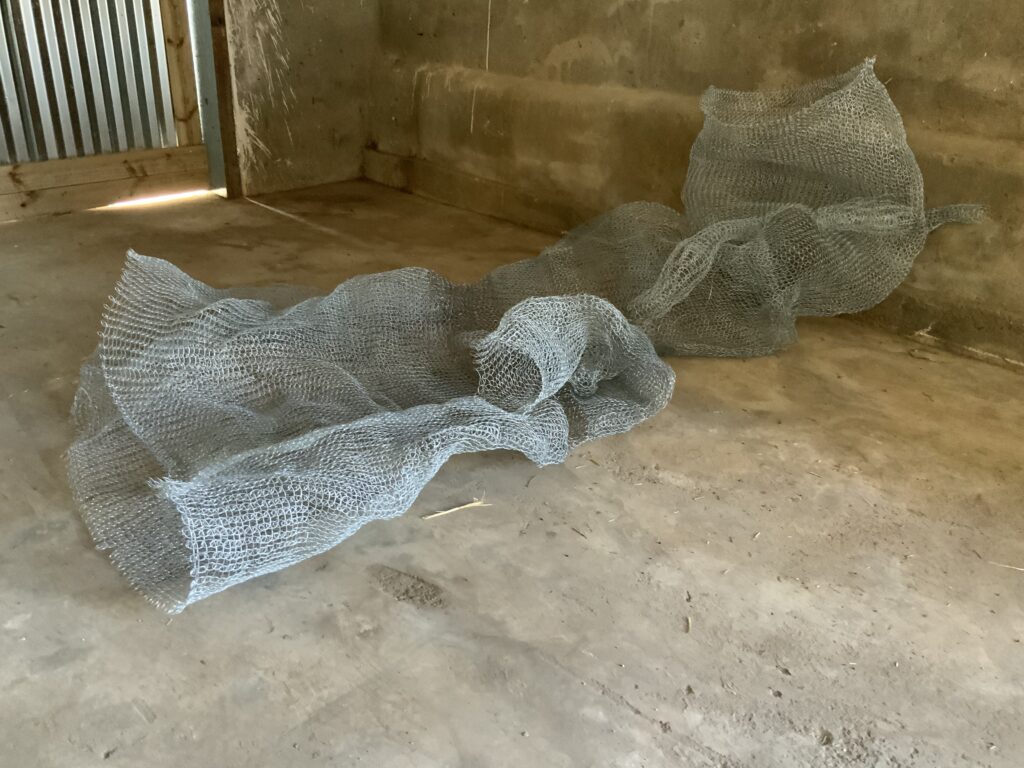
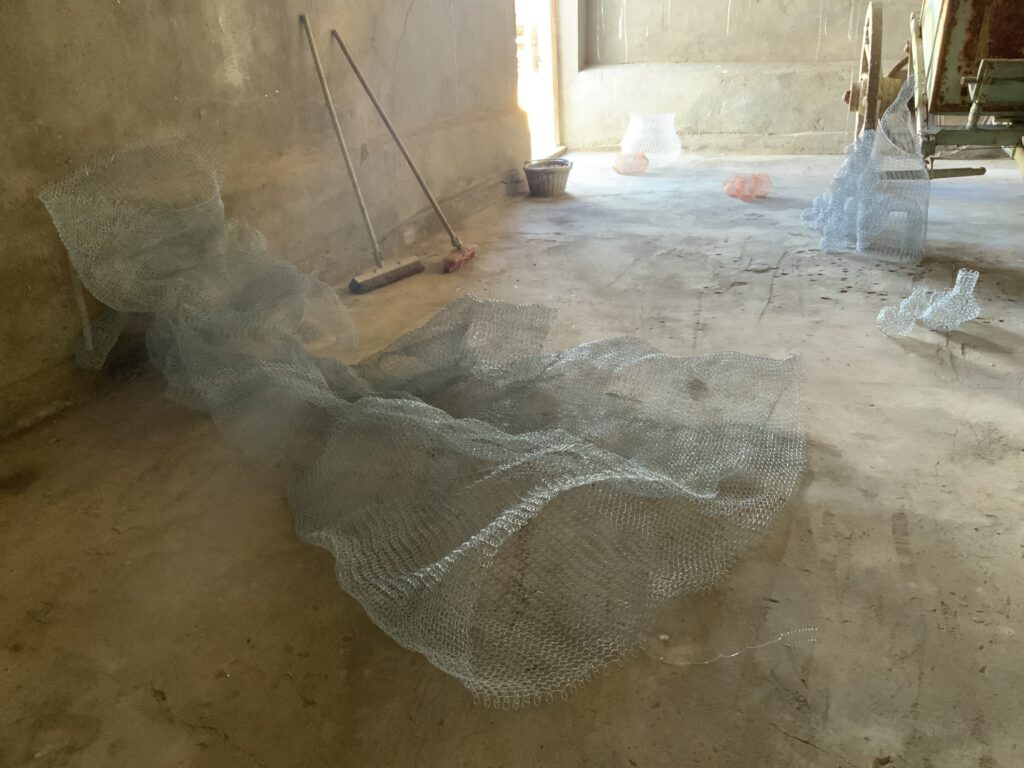
Then, as viewers approach or interact with the nest, they can transition from passive observation to active engagement. The juxtaposition between silence and interaction could be explored through how viewers experience the space—the tension of a nest hanging in the void, their physical relationship to it (do they stand below, sit nearby, or engage with it directly?). Their role in this transition is crucial, making them an integral part of the art installation. (use sound and provide a space to sit/lie down?)
I could also play with light, using shadows or illumination to enhance the nest’s ethereal qualities, shifting between moments of stillness and activity. This layering of elements—the physical barn, the hanging nest, and the interaction—creates a space for contemplation and shared experience. I looked at how light is used in the work of Pensa, “Mirall”. This is a very current exhibition which runs from 19 September 2024 to 15 February 2025. I value how it plays with light and transparency.
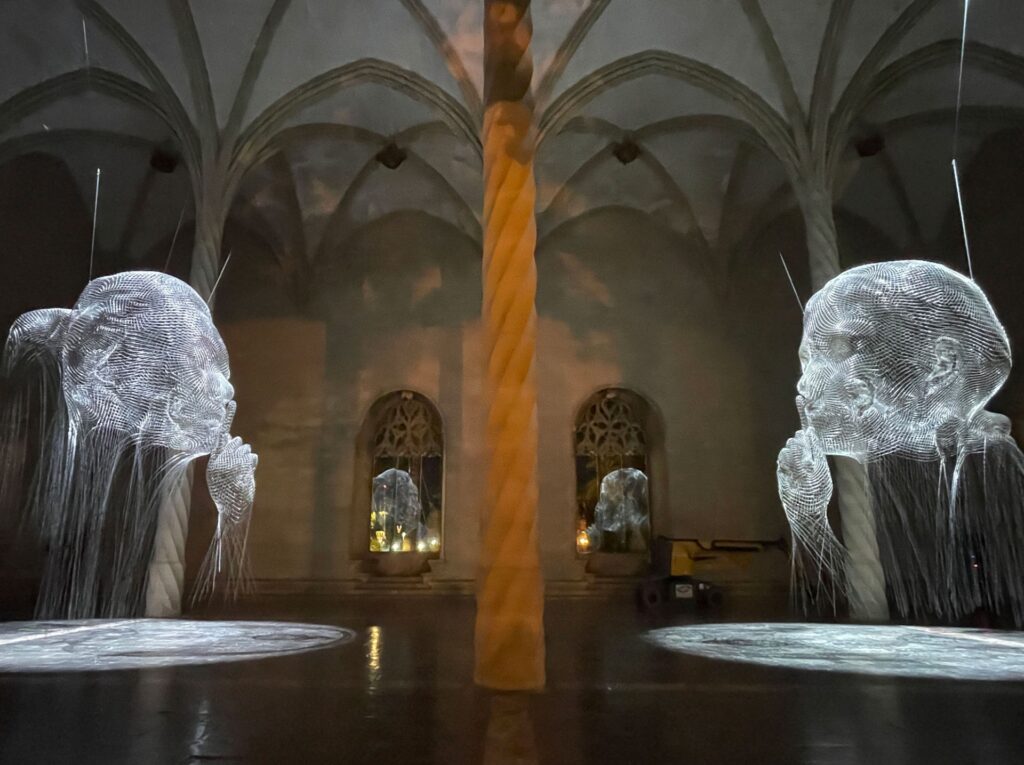
Using sound
Below is a sound recording I plan to use. It was done at a nest I visited during our recent trip to Namibia. I spent many hours around nests and observing these little birds. I ponder the idea that bird sound is seen as a song—as humans, we talk and sing.
Some of my sound recordings proved to be ‘contaminated’ as wind noise competed with it. The time spent around these sites was enjoyable: I could watch the birds hanging out from their nests, see how agile they were when they flew into the nest (the entrance is very spiky) or hop on the ground—they hop with their feet held together and are cheerful when foraging. I learned that they remain near their nests – on one visit, they ‘came back’ and left again while I was observing the nest nearby. I almost had the feeling they were ‘checking’ on me. By early evening (around 19:00), the sounds of the barking geckos nearly competed with them. I usually found them at the nest in the mornings between 07:00 am and 08:00 am. There was also a day when I saw birds in and around their nest at around 11:00 am. Another memory I will cherish is that our friends with whom we travelled were also becoming interested in these fantastic nests and birds.
A sound recording will be available on headphones for viewers to use. I had to work through my recordings at the nests and compile a final recording. Below is an example of one I made—one can hear the wind and other sounds as I only had my cell phone.
I was considering whitewashing the walls, mainly for the effect of shadows, but have since decided not to do so. After spending more time in the space, I contemplated how much I wanted it to define the work. I think the work can stand alongside – to me the space in terms of colour is neutral, meaning nothing tries to compete. It opens up the possibility of what light can do. I value the idea of beauty in imperfection, which the space captures. I am grateful that I have the privilege of taking my time to make these important decisions. I am open to advice from the photographers. I suggested using white screens when photographs are taken in the next few days.
We did a preliminary ‘shoot’ on Saturday, 21 September 2024, mainly to explore the natural light.
I am again reminded of the importance of considering light, the environment, colour, and how things interact with each other.

I realised I needed to consider how and where I would place all the smaller objects I made with wire. I want to set the more significant objects on the floor and hang the taller ones in groups.
Clearing the space was on the agenda for the last part of the week ending 20 September 2024. Removing the items from the barn took a team of 4 farm workers an hour. As decided earlier, I suggested we leave one of the old equipment pieces as a prop inside the space. It was lovely when the door to the dam and mountains was opened, and light streamed into the space. The floor had a good sweep, and the space is now ready to be explored with my work. I hope to have an explorative ‘photoshoot’ here this weekend.
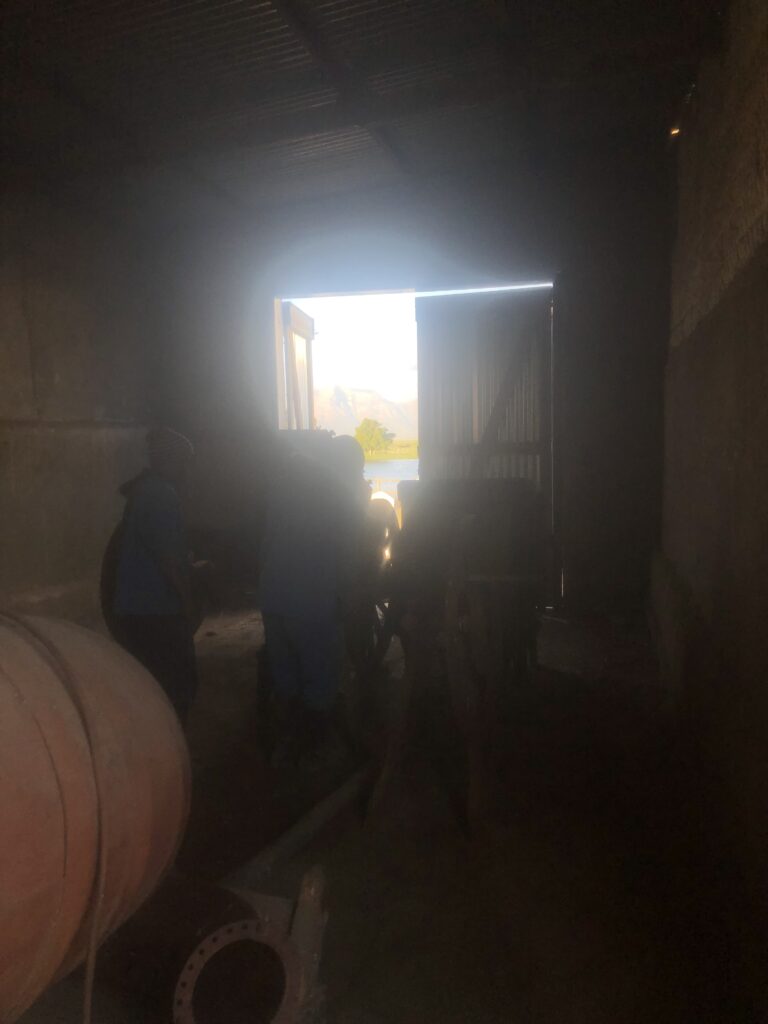
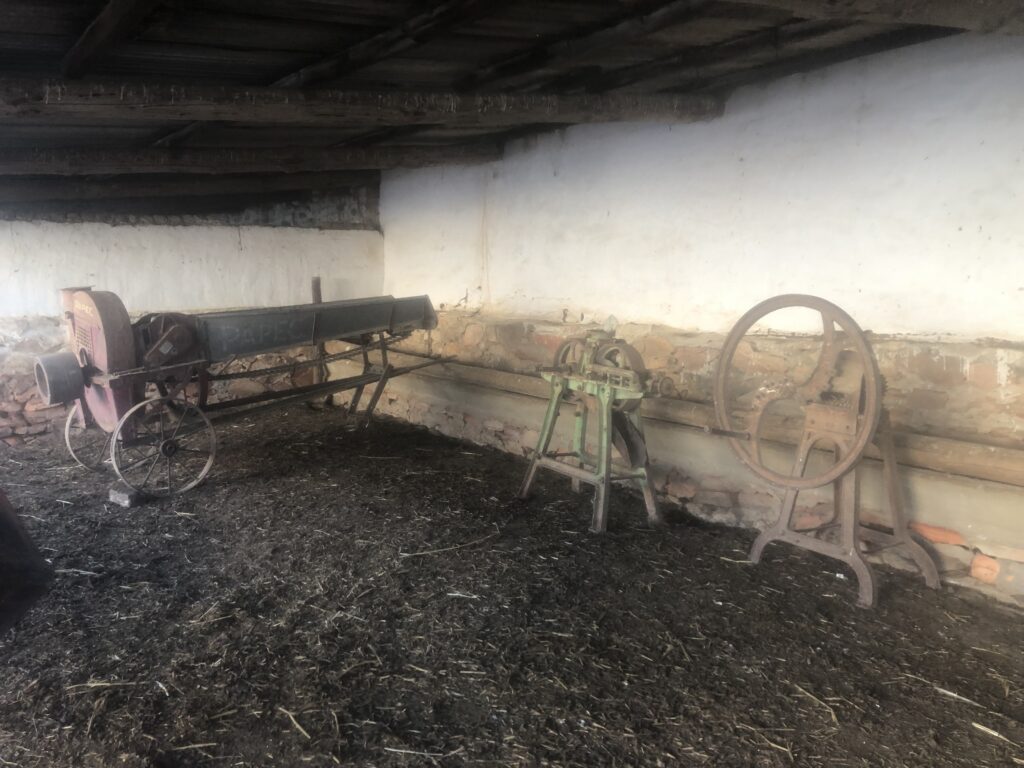
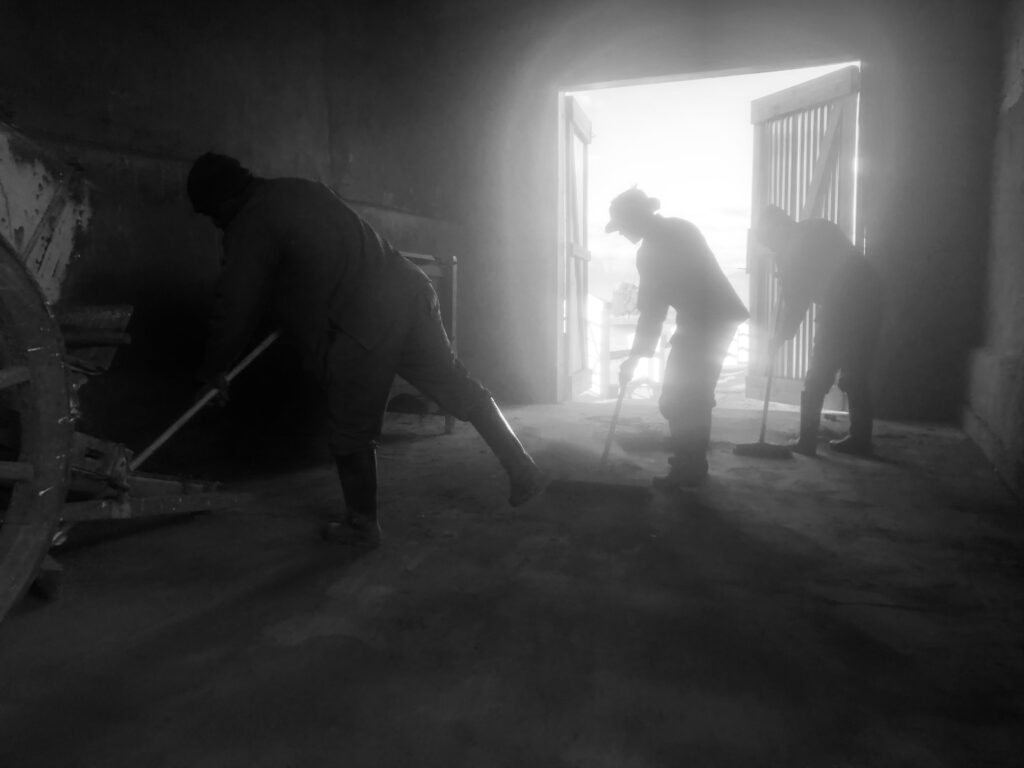
Reflecting thoughts about the venue and how it will be used
I like the naturalness of the barn – historically, it was a space for manual work or storage, but it gained new meaning when used as an exhibition space. Its transformation symbolizes how spaces—and, by extension, human relationships with nature—are fluid and open to reinterpretation. As sociable weaver nests are used communally by multiple species, the shed can become a shared, dynamic space that fosters engagement. It becomes a place where the barriers between human-made and natural, interior and exterior, are questioned. I plan to use sound, which will be recorded and listened to with headphones. The floors will be covered with straw to remind viewers of a nest – some of my drawings will be placed on the floor.
Considering the communal aspect of weaver nests, I could invite viewers to contribute something to the exhibition (e.g., notes, drawings, or small objects they leave in designated spots), creating a physical reminder of interconnectedness and participation. However, I found that this was extra communication that I could not keep up with in the weeks before the exhibition, so I did not follow through on it.
Reception area
Guests will be received between the barn and our house. The barn area is easily accessible for disabled visitors.
For the Vernissage, drinks and snacks will be served to the guests. A long table will be available to get drinks and snacks from. I have contacted Prof Thomsen at UCT to give a short speech about his research into the sociable weaver nests. Then, I can share my work/process. We will then walk around the exhibition. I plan to invite other key figures, such as members of the local tourism organisation, gallery owners, and artists in the valley. I created an Excel sheet with the contact details.
Wing installation
QR codes with image
Instructions printed to use the QR code
Budget
To keep track of expenses, I created a simple spreadsheet to budget and manage them as I go along, adjusting for any changes. I had to anticipate costs such as the Venue, Insurance, Art Materials still needed, Installation and rental equipment, Marketing materials and the Vernissage.
Lighting the space is essential, and I will work with the photographer(s) to ensure we capture the effect we want to enforce, such as shadow casts and light penetrating through the works. Equipment needed, such as a video camera, lights, and backdrops, will be rented. I have two professional studio lights with a stands available. Rentals must be booked at least a week in advance. We have the option of two reputed companies in Cape Town and have experience of their service. (Camera Shack and Orms Direct)
In terms of health and safety and risk assessment, only SABS-approved multi-socket or multi-extender plugs or capture will be utilised. There are three-phase power points and security lights for the evening. Viewing will only be during daylight—from 10:00 to 18:00. I have also enquired about public liability insurance. I obtained a document compiled by VANSA ( ) Best Practice Guide (pdf) to consider and apply where necessary.
Promotion and documentation
Website: add a menu page for the exhibition. I added an extra menu page to my current website, https://karenstanderart.co.za. This drop-down menu is called Kalahari Hotel, and all the exhibition information will be placed here. I hope to ensure this is an easy link for viewers and to add a QR code for this site. I will include the invitation to the exhibition, links to social media pages, my artist statement around my Body of Work for this project, and video and photographic images at this link.
I realised that I needed to update my website’s ‘about’ page to include a broader practice or be more specific about how I use this platform for my studies and upcoming exhibitions. I also needed to update the images. This was sorted by the start of the week, Monday, September 16, 2024.
An art book is envisioned to be available for visitors to buy. This is still a work in progress, and I plan to have some of it on view during the exhibition. We are still planning the layout and information to be shared. I found good information on the website nmwa.org. Due to budget constraints, I could not have this ready for the exhibition, but I am considering making at least one for the final assessment.
All invitations will be shared digitally, and I will use an e-mail list to share this via WA and e-mail. I will also share on Instagram and Facebook. The idea is to continue to work with the layers between the nest—as wire and as made with organic materials. The formal invitation will be shared as a PDF, as all the links on the invitation will work and make the information about my work accessible to viewers.
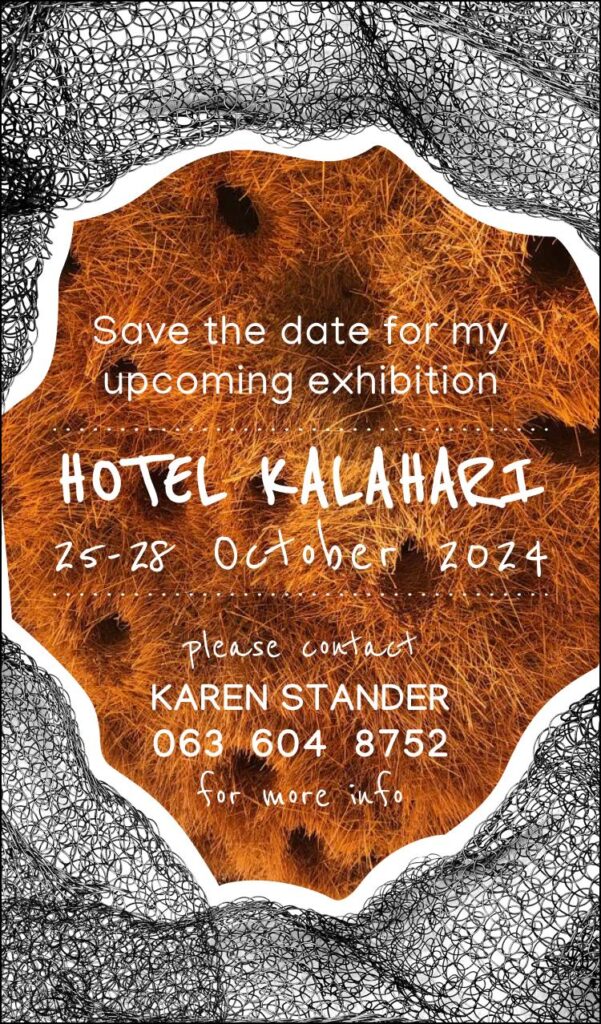
Photography
I need to document my work and the exhibition through photographs, both for marketing material and for using some of the objects I have made. I have photographer friends who will assist me, and I have asked for a quote from a videographer. The idea is to document the opening as video work that can be used online and shared within my study blog. We started by doing some photo shoots of the space and bring in some of the work. The idea is to build onto this process up to the exhibition. Some of these photos can be available as prints after the exhibition.
Quality control of my work
I am making this note because I need to consider connecting the wire ends smartly. Much of the work still needs to be finished in this way.
PS: Note to myself. During this course, I have done the work independently, but I always had the support of my tutors and fellow student support groups, as well as that of my husband, family, and friends. I have just realised that this whole effort is very much the same—my support group is so important.
Lessons from ASAWA around making art: Asawa’s journey is a lesson in the art of transformation. As she once said, “Sculpture is like farming. If you just keep at it, you can get quite a lot done.” The world will never stop throwing obstacles in our way; we can only control how we handle it all. Her mother Haru’s most essential values, ‘gaman’—endurance; ‘nintai’—patience, and ‘enryo’—restraint, were lived by Asawa.
Pricing of my work
Decisions have to be based on material cost, time, and labour, as well as whether the works will be sold as one-offs or limited editions. I have decided to talk to a local gallery owner and some local artists. We could only secure a meeting after the exhibition. I value her opinion. In the meantime, I created a spreadsheet with the needed information and a catalogue with images.
I want to look at the groupings of work – here, it implies work that has form within form as different from just form. I also have to look at size (more material and time)
Reflecting on this part
I feel the biggest learning is to try the work in the intended ‘space’ and ask opinions about this experience. I am also excited that the work has become an installation in its own right. I did tone it down in terms of sound equipment and lighting as this is costly and I need to be honest about the rugged space I chose for the work, which connects the work to nature and a big part of who I am and how I feel about this work.